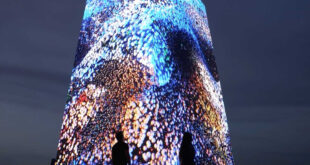The dome is proudly directed towards the sky, at night a lantern illuminates the stained glass windows of the cupola. A cupola is the visible element of the interior of a monument: it is a hemispherical, elliptical or polygonal vault, placed under the dome; a majestic fireworks, restful and permanent.
The Latin words doma and domatis, come from the Greek δῶμα (act). According to Diez, “duomo” comes from the Latin Domus Dei, house of God. But why separate “duomo” from “doma” and link it to domus? Simply to integrate the action to the dome. A dome needs considerable effort, ingenuity and power to rise from the ground and hang in the sky.
From time immemorial, it is under a dome that the most spectacular actions, including the sacrifices to the gods, take place. Chateaubriand noted: “It is religion that causes the vestal to groan in the middle of the night under its tranquil domes … the ancient hallelujah of Jacob makes the dome of the churches resound …”
As for the cupola, a diminutive of the Latin cupa, in comparison to an inverted cup; the cup that inspired Botticelli to unveil the perfect beauty of the female breast that should ideally just fill the inside of a crystal cup.
Francesca Pompei was able, thanks to her photographic mastery, to take us inside the most beautiful cupolas, just like swallows flitting happily within them.
 Collection Pan Arab Luxury Magazine
Collection Pan Arab Luxury Magazine



